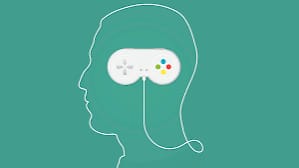Fitness
Mastering Self-Control: A Complete Guide on How to Control Your Mind, Emotions, and More

Mastering Self-Control: A Complete Guide on How to Control Your Mind, Emotions, and More
Self-mastery is the foundation of a successful, peaceful, and fulfilling life. Whether you’re struggling with emotions, thoughts, anxiety, or even your dreams, learning how to control your mind and everything connected to it can be life-changing. In this comprehensive guide, we’ll explore exactly how to control your mind, emotions, dreams, anger, tears, unwanted thoughts, anxiety, and personality – using proven methods backed by psychology and real-world success.
How to Control Your Mind
Learning how to control your mind starts with mental discipline. Your mind is a powerful tool, but without control, it can create unnecessary stress, distractions, and overthinking.
How to control your mind effectively:
Practice mindfulness meditation daily to enhance awareness.
Focus on the present moment – eliminate unnecessary mental clutter.
Train with positive affirmations and visualization techniques.
Develop mental discipline by avoiding multitasking and distractions.
Read books that strengthen focus and mental resilience.
Repeat positive thoughts, reduce mental noise, and remember: mastering how to control your mind is a process, not an event. With consistency and commitment, you’ll gain the mental discipline needed to lead a peaceful life.
How to Control Your Emotions
Understanding how to control your emotions is key to emotional well-being. Emotional regulation helps you make better decisions and respond calmly even in tough situations.
Steps for how to control your emotions:
Name the emotion – labeling helps create distance.
Take deep breaths to lower physiological arousal.
Use emotional regulation techniques like journaling or self-talk.
Stay away from triggers when possible.
Practice empathy and perspective-shifting.
Whether it’s joy, sadness, or rage, mastering how to control your emotions allows you to remain centered. Emotional maturity grows through practice and self-reflection, and using emotional regulation tools can bring long-lasting control.
How to Control Your Dreams
Ever wanted to influence what happens in your sleep? Learning how to control your dreams is known as lucid dreaming, where you’re aware you’re dreaming and can even manipulate the dream’s events.
Tips for how to control your dreams:
Keep a dream journal to remember your dreams.
Practice reality checks during the day.
Use the MILD or WILD techniques for lucid dreaming.
Go to sleep with a clear intention of your dream goals.
Create a relaxing pre-sleep routine.
Mastering how to control your dreams can be a powerful creative and therapeutic tool. With consistent practice, lucid dreaming becomes not only possible but frequent.
How to Control Your Anger
Knowing how to control your anger is essential for healthy relationships and inner peace. Anger management is not about suppressing your anger but managing it constructively.
How to practice how to control your anger:
Recognize early signs – tight jaw, racing heart.
Take a timeout – remove yourself from the trigger.
Use anger management techniques like deep breathing and counting.
Express your anger assertively, not aggressively.
Seek professional help if anger becomes destructive.
With daily effort, you can master how to control your anger, reduce stress, and strengthen relationships. Good anger management is a lifelong skill that offers emotional stability.
How to Control Your Tears
For many, crying is a natural response to emotional stimuli. But if you’re in situations where you need to know how to control your tears, here are practical steps.
Ways for how to control your tears:
Blink rapidly to prevent tears from forming.
Focus on your breathing to calm your system.
Distract your mind with math or a task.
Think about something neutral or mundane.
Apply pressure to the roof of your mouth with your tongue.
Although crying is normal, learning how to control your tears is useful in public or professional settings. Practicing to stop crying helps you maintain control when it matters most.
How to Control Your Unwanted Thoughts
Learning how to control your unwanted thoughts is crucial for mental clarity and peace. Intrusive or negative thoughts can be distressing and persistent.
Here’s how to control your unwanted thoughts:
Don’t suppress them – acknowledge their presence.
Use cognitive defusion techniques.
Practice mindfulness to observe without reacting.
Label them as intrusive thoughts rather than truths.
Shift focus to a task or neutral thought.
Intrusive thoughts don’t define you. Understanding how to control your unwanted thoughts can transform your mental health and restore focus.
How to Control Your Anxiety
Mastering how to control your anxiety starts with understanding your triggers and practicing daily anxiety coping techniques. Anxiety is manageable with the right approach.
How to practice how to control your anxiety:
Practice deep breathing and progressive muscle relaxation.
Avoid caffeine and sugar that spike anxiety.
Use anxiety coping techniques like journaling or CBT.
Ground yourself with the 5-4-3-2-1 technique.
Seek professional help if anxiety is chronic.
Whether it’s social anxiety or panic attacks, learning how to control your anxiety will change your life. Incorporating anxiety coping techniques into your routine builds resilience over time.
How to Control Your Personality
Changing or refining behavior begins with learning how to control your personality. While core traits may be stable, habits, reactions, and social behavior can be improved.
Strategies for how to control your personality:
Become self-aware – identify patterns and habits.
Read books on personality development.
Set small goals for behavioral changes.
Track progress through journaling or apps.
Get feedback from friends or mentors.
Knowing how to control your personality enables personal growth and stronger connections. Personality development is about evolving into your best self – not changing who you are.
Final Thoughts: Self-Mastery is a Lifelong Journey
To summarize, mastering control over your inner world brings more peace, clarity, and strength. Whether you’re learning how to control your mind, emotions, dreams, or anxiety, the path forward starts with awareness and daily practice.
Developing control in these areas creates a powerful shift in your life. It won’t happen overnight, but with consistent effort, you’ll become the master of your own mind, emotions, and destiny.
Meta Description:
Discover practical ways to master self-control. Learn how to control your mind, emotions, dreams, anger, tears, anxiety, and personality with this comprehensive guide.
Keyphrase:
How to control your mind and emotions

Fashion
How to Contour Your Face: A Complete Guide for Every Age and Skill Level

How to Contour Your Face: A Complete Guide for Every Age and Skill Level
Contouring has become one of the most popular makeup techniques in beauty. Learning how to contour your face properly can transform your features, enhance your natural bone structure, and give you a polished look without appearing overly done. Whether you’re a beginner or an older woman looking for subtle definition, this guide will show you an easy how to contour your face routine that works for everyone.
What Does Contouring Do?
When you learn how to contour your face, you are essentially playing with light and shadow. Darker shades create depth and slim down certain areas, while lighter shades highlight and bring forward the features you want to enhance. Many people believe contouring is complicated, but the truth is, there are easy how to contour your face techniques that even beginners can master.
Step-by-Step: How to Contour Your Face for Beginners
If you’re just starting out, you may wonder how to contour your face for beginners in a way that feels natural. Here’s a simple method:
Prep Your Skin – Always start with a clean, moisturized face.
Choose the Right Products – Powder contour is best for beginners, while creams give a more dramatic look.
Map Out Your Face – Apply contour under the cheekbones, along the jawline, and at the temples.
Blend, Blend, Blend – The secret to natural contouring is seamless blending.
Highlight the High Points – Add a light shade to the bridge of your nose, tops of your cheeks, and center of the forehead.
Following this routine makes how to contour your face with makeup much less intimidating.
Easy How to Contour Your Face: Quick Tips
If you don’t have much time in the morning, try this easy how to contour your face method:
Use a bronzer two shades darker than your skin.
Apply with an angled brush under your cheekbones.
Blend upward for a lifted look.
Sweep a soft highlighter across your cheekbones for instant glow.
This simplified version of how to contour your face is perfect for busy schedules.
How to Contour Your Face with Makeup: Choosing the Right Tools
Mastering how to contour your face with makeup isn’t just about placement—it’s also about tools. A fluffy blending brush will give a soft finish, while a beauty sponge helps with cream products. For precision, a small angled brush works best around the nose and jawline. With the right tools, you’ll discover that even an easy how to contour your face look can appear professional.
How to Contour Your Face as an Older Woman
If you’re wondering how to contour your face older woman, the key is subtlety. Heavy contouring can emphasize fine lines, but a soft hand creates a youthful lift. Use cream-based products, which blend smoothly and hydrate the skin. Apply lightly under the cheekbones and blend upward—this is the gentlest approach to how to contour your face older woman without making it appear harsh.
Here are three tips specifically for mature skin:
Stick to warm tones for a natural finish.
Avoid glittery highlighters; instead, choose a satin sheen.
Focus on lifting, not slimming, the features.
With these steps, how to contour your face older woman becomes more about elegance than drama.
Common Mistakes When Learning How to Contour Your Face
While figuring out how to contour your face, many beginners fall into these traps:
Using shades that are too dark.
Forgetting to blend properly.
Contouring in harsh lines instead of soft strokes.
If you want to know how to contour your face for beginners without errors, always remember: less is more.
Final Thoughts
Learning how to contour your face doesn’t have to be overwhelming. Whether you’re curious about how to contour your face with makeup, just starting with how to contour your face for beginners, or exploring how to contour your face older woman techniques, the basics remain the same: choose the right products, map your features, and blend thoroughly.
With practice, you’ll master an easy how to contour your face routine that enhances your natural beauty and boosts your confidence every single day.

Fitness
Vegan Meal Prep Ideas for a Healthy, Affordable, and Stress-Free Week

Vegan Meal Prep Ideas for a Healthy, Affordable, and Stress-Free Week
If you’re looking to save time, eat healthier, and cut down on stress, diving into vegan meal prep ideas is the way to go. Prepping meals ahead of time not only keeps you consistent with your health goals but also makes plant-based eating simple and affordable. Whether you’re new to meal prepping or a seasoned pro, this guide will help you with vegan meal prep recipes, tips, and hacks to make your week smooth and delicious.
Why Try Vegan Meal Prep?
Meal prepping is a game-changer for anyone with a busy lifestyle. With the right vegan meal prep ideas, you’ll enjoy:
Consistency: Sticking to healthy meals without last-minute takeout temptations.
Savings: Mastering cheap vegan meal prep means eating well without breaking the bank.
Time efficiency: A few hours on the weekend saves countless hours during the week.
Variety: Using creative vegan meal prep recipes ensures you won’t get bored.
Easy Vegan Meal Prep Ideas to Try
Here are some easy vegan meal prep strategies you can start using right away:
Batch Cooking Grains & Legumes
Cook quinoa, rice, lentils, and beans in bulk. These staples are the backbone of most vegan meal prep ideas and pair well with veggies, sauces, or salads.
Roast a Tray of Vegetables
Sweet potatoes, broccoli, carrots, and zucchini make versatile additions to any dish. This is a must for easy vegan meal prep because roasted veggies reheat beautifully.
Overnight Oats & Chia Pudding
Breakfast sorted! These quick vegan meal prep recipes give you grab-and-go options that are filling and nutritious.
Homemade Sauces & Dressings
A creamy tahini dressing or spicy peanut sauce turns the simplest bowl into a gourmet meal. Having sauces ready enhances all your vegan meal prep ideas.
Cheap Vegan Meal Prep Tips
Many people think eating plant-based is expensive, but cheap vegan meal prep proves otherwise. Here’s how:
Buy beans, lentils, and grains in bulk.
Use seasonal vegetables for your vegan meal prep recipes.
Plan meals around versatile ingredients like chickpeas and tofu.
Repurpose leftovers to create multiple vegan meal prep ideas with minimal effort.
By planning smart, cheap vegan meal prep keeps your grocery bill low while giving you endless variety.
5 Delicious Vegan Meal Prep Recipes
Here are some simple and tasty vegan meal prep recipes you can batch cook:
Chickpea Salad Wraps – Protein-packed and perfect for lunchboxes.
Lentil Curry with Rice – A staple in easy vegan meal prep that freezes well.
Roasted Veggie Buddha Bowls – Colorful and customizable with your favorite grains.
Black Bean Chili – Great for dinner and excellent for cheap vegan meal prep.
Tofu Stir-Fry with Brown Rice – Quick, filling, and a go-to for busy nights.
Each of these meals highlights how vegan meal prep ideas can be flavorful, budget-friendly, and incredibly satisfying.
How to Stay Motivated with Vegan Meal Prep
Rotate your favorite vegan meal prep recipes weekly to keep things fresh.
Store meals in clear containers so you can “see” your options.
Mix and match proteins, veggies, and grains for endless vegan meal prep ideas.
Remember: easy vegan meal prep works best when you start small and build habits gradually.
Final Thoughts
Exploring different vegan meal prep ideas makes it simple to stick to your health goals while saving time and money. From quick breakfasts to hearty dinners, there’s no shortage of vegan meal prep recipes to keep your week exciting. Whether you’re aiming for easy vegan meal prep to save time or focusing on cheap vegan meal prep to stretch your budget, the possibilities are endless.
Start small, experiment with flavors, and before you know it, you’ll master the art of vegan meal prep. With a little planning, these vegan meal prep ideas will help you eat better, save money, and live healthier—all while enjoying every bite.

Fitness
Melatonin Guide: Safe Use, Dosage, and Answers to Common Questions

Melatonin Guide: Safe Use, Dosage, and Answers to Common Questions
When it comes to improving sleep naturally, melatonin has become one of the most discussed supplements. Parents often wonder about melatonin for kids, adults ask “how much melatonin should I take?”, and many people worry “is melatonin bad for you?”. In this comprehensive guide, we’ll break down everything you need to know—from dosage to duration, safety to effectiveness—in a way that’s clear, evidence-based, and family-friendly.
What is Melatonin?
Melatonin is a hormone produced by the brain’s pineal gland that regulates the circadian rhythm—your body’s natural sleep-wake cycle. As a natural sleep aid, melatonin is available in supplements, often used to support better sleep quality, help manage sleep disorders, or ease insomnia treatment without the need for heavy medications.
Melatonin for Kids: Safe or Risky?
One of the most searched topics is melatonin for kids. Parents turn to supplements when children face pediatric sleep problems, jet lag, or struggle with consistent sleep routines. While short-term use can be safe, experts recommend pairing it with good sleep hygiene habits first.
Establishing consistent bedtimes
Reducing screen exposure at night
Creating a calm sleep environment
Still, the question remains: “is melatonin bad for you?” For kids, safety depends on melatonin dosage, frequency, and guidance from a pediatrician.
How Much Melatonin Should I Take?
Adults often ask, “how much melatonin should I take?” The answer isn’t one-size-fits-all. Most people find that a melatonin dosage of 0.5mg to 5mg taken 30–60 minutes before bed helps improve sleep quality. However, higher doesn’t always mean better.
Taking too much leads people to ask: “how much melatonin is too much?”. The truth is, insomnia treatment doesn’t require mega-doses. Too much can cause melatonin side effects like headaches, nausea, and next-day grogginess.
How Much Melatonin is Too Much?
The safety line varies by age and health condition. For kids, melatonin for kids should always be discussed with a doctor. For adults, more than 10mg is often considered too much melatonin. Exceeding this can disrupt your circadian rhythm rather than fix it.
So when people ask, “how much melatonin is too much?”, remember: moderation is key. Overdoing supplements won’t speed up sleep—it may worsen sleep disorders.
How Long Does Melatonin Last?
Another common question: “how long does melatonin last?” Generally, the effects remain in your system for 4–8 hours. This makes it useful for falling asleep and staying asleep through the night.
However, the exact time depends on the melatonin dosage, your metabolism, and whether it’s fast-release or extended-release. Parents using melatonin for kids often prefer shorter-lasting options to avoid next-morning drowsiness.
Understanding “how long does melatonin last” also helps you time it correctly. Take it too late, and you may feel groggy in the morning.
Is Melatonin Bad for You?
The big concern: “is melatonin bad for you?”. In general, melatonin is considered safe for short-term use, even for pediatric sleep problems. But like any over the counter sleep aid, misuse can cause issues.
Possible melatonin side effects include:
Dizziness
Nausea
Morning drowsiness
Vivid dreams
Long-term safety is still being studied, so experts recommend using melatonin as a tool, not a permanent fix. Good sleep hygiene and natural habits remain the foundation for healthy rest.
Final Thoughts
Melatonin can be an effective natural sleep aid when used responsibly. Here’s what to remember:
Melatonin for kids should only be used under pediatric guidance.
“How much melatonin should I take?” depends on your age, health, and goals. Start small.
“How much melatonin is too much?” is usually above 10mg for adults and should be avoided.
“How long does melatonin last?” varies, but most feel effects for 4–8 hours.
“Is melatonin bad for you?” Not when used wisely, but overuse and dependency can be harmful.
By pairing supplements with strong sleep hygiene, balanced routines, and healthy lifestyle choices, melatonin can support better rest without risk.

-

 Business2 months ago
Business2 months ago☕️The Ultimate Coffee Lover’s Guide: From Caffeine in a Cup of Coffee to Turkish Coffee Delights
-

 Business2 months ago
Business2 months agoThe Many Faces of “Future”: Markets, Farming, Music, AI, and a Better Tomorrow
-

 Business2 months ago
Business2 months agoIn today’s fast‑moving economy, what industry is slowly dying and why?
-

 Health2 months ago
Health2 months agoA Journey Through Life’s Firsts: Health, Gaming, and Experiences That Shape Us
-

 Lifestyle2 months ago
Lifestyle2 months agoWhat is life Philosophy?
-

 Tech1 month ago
Tech1 month agoUltimate Secret Android Apps You’ll Actually Love
-

 Business2 months ago
Business2 months agoRussia’s Energy Ministry Launches Crypto Mining Register
-

 Lifestyle2 months ago
Lifestyle2 months ago🐦 The Ultimate Bird Watching Guide: Best Birdwatching Locations & Tips for Beginners





